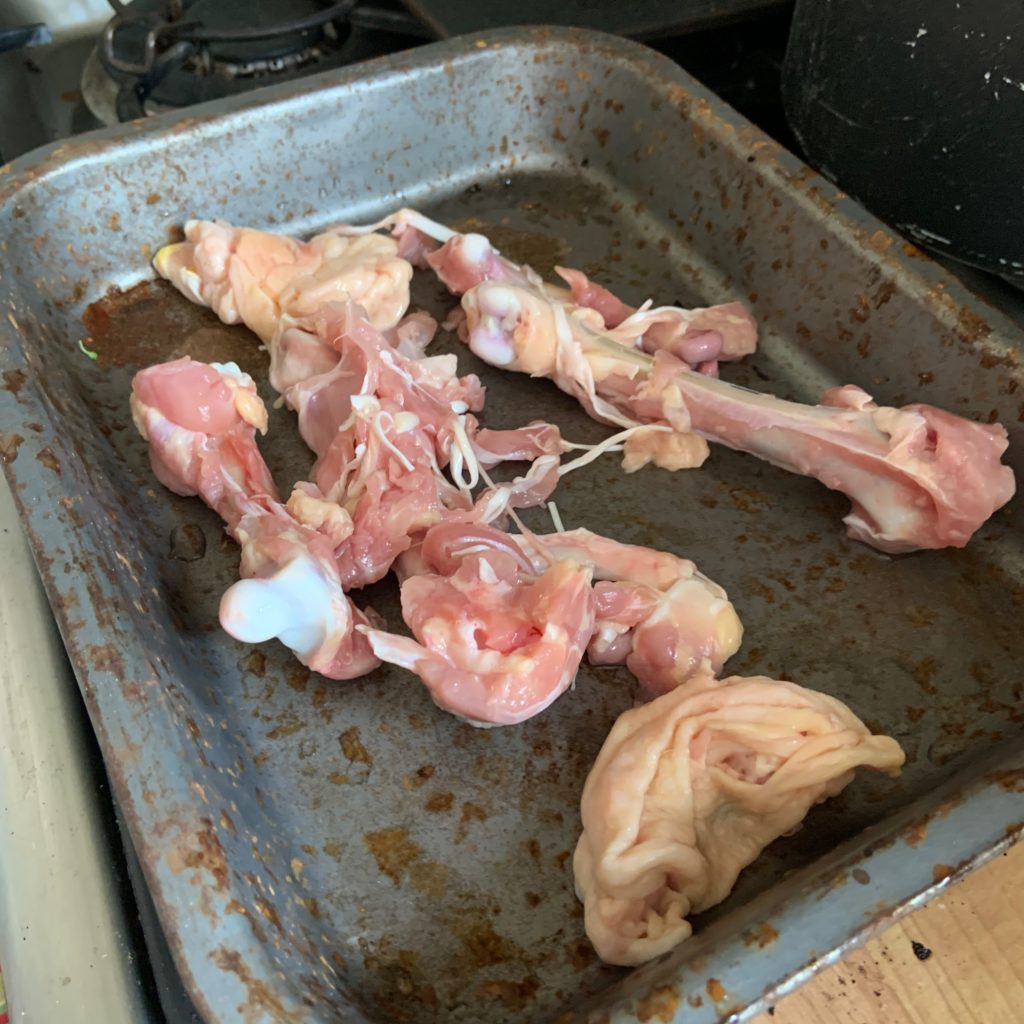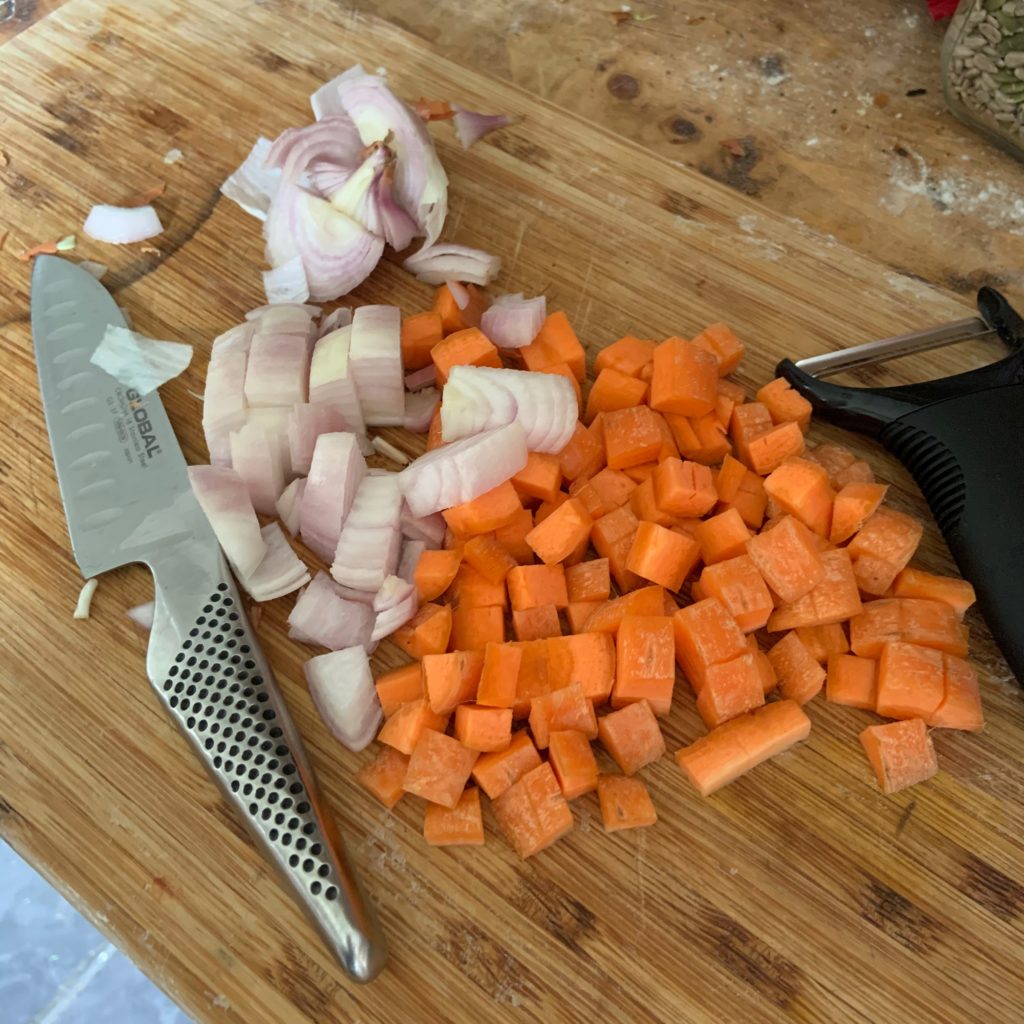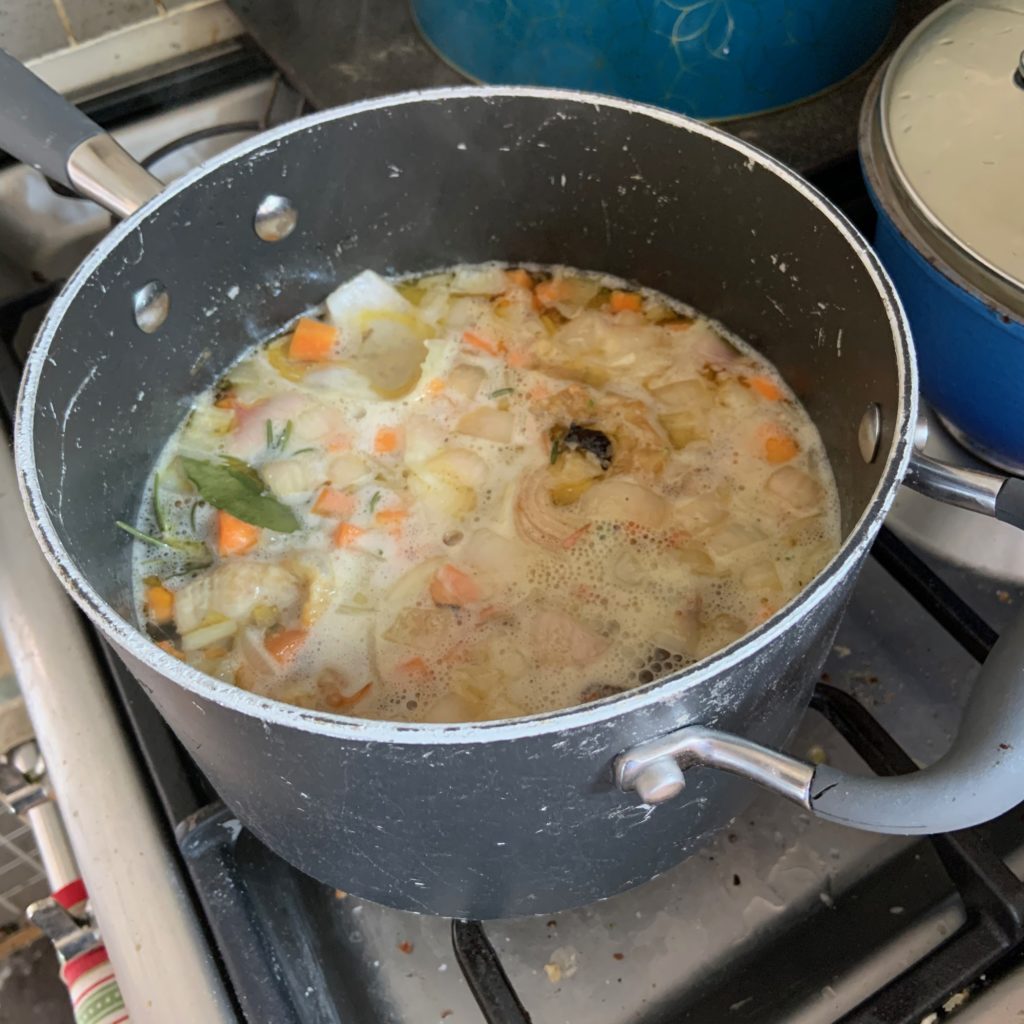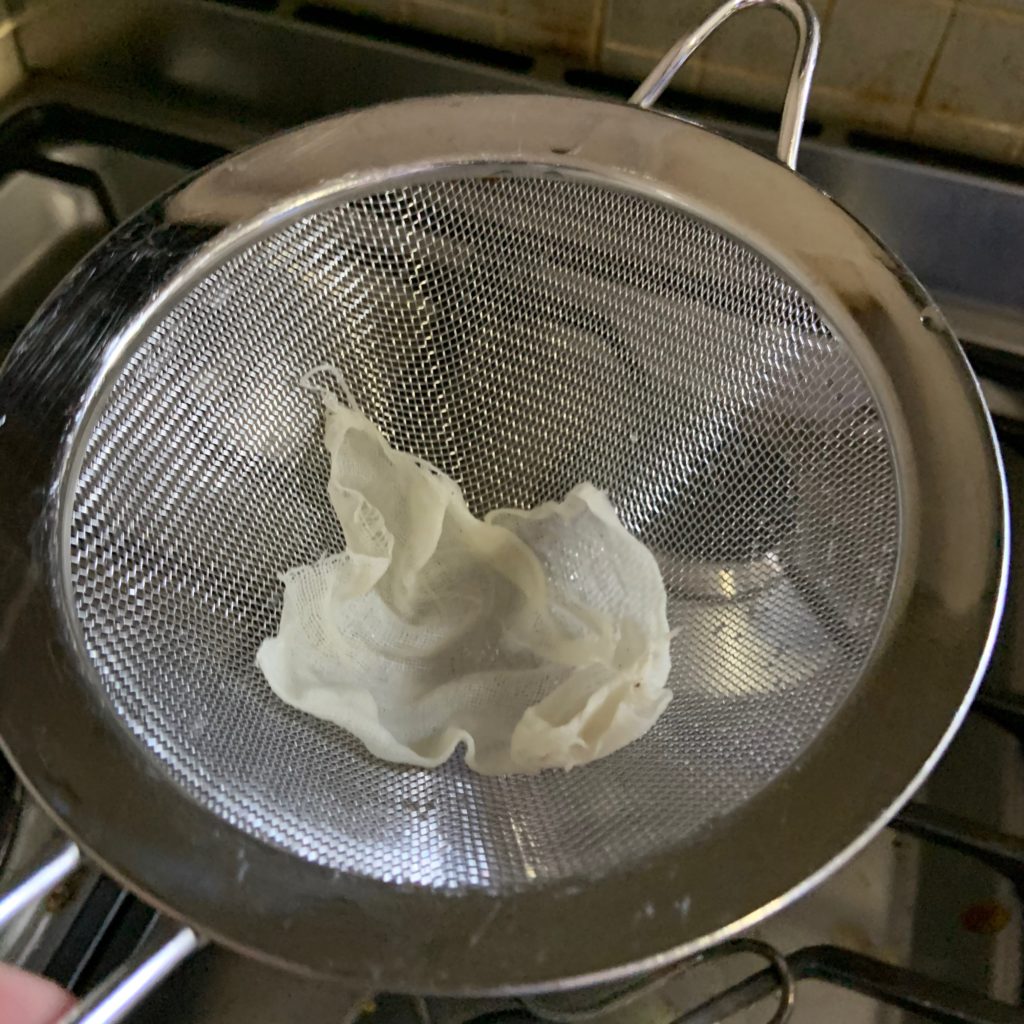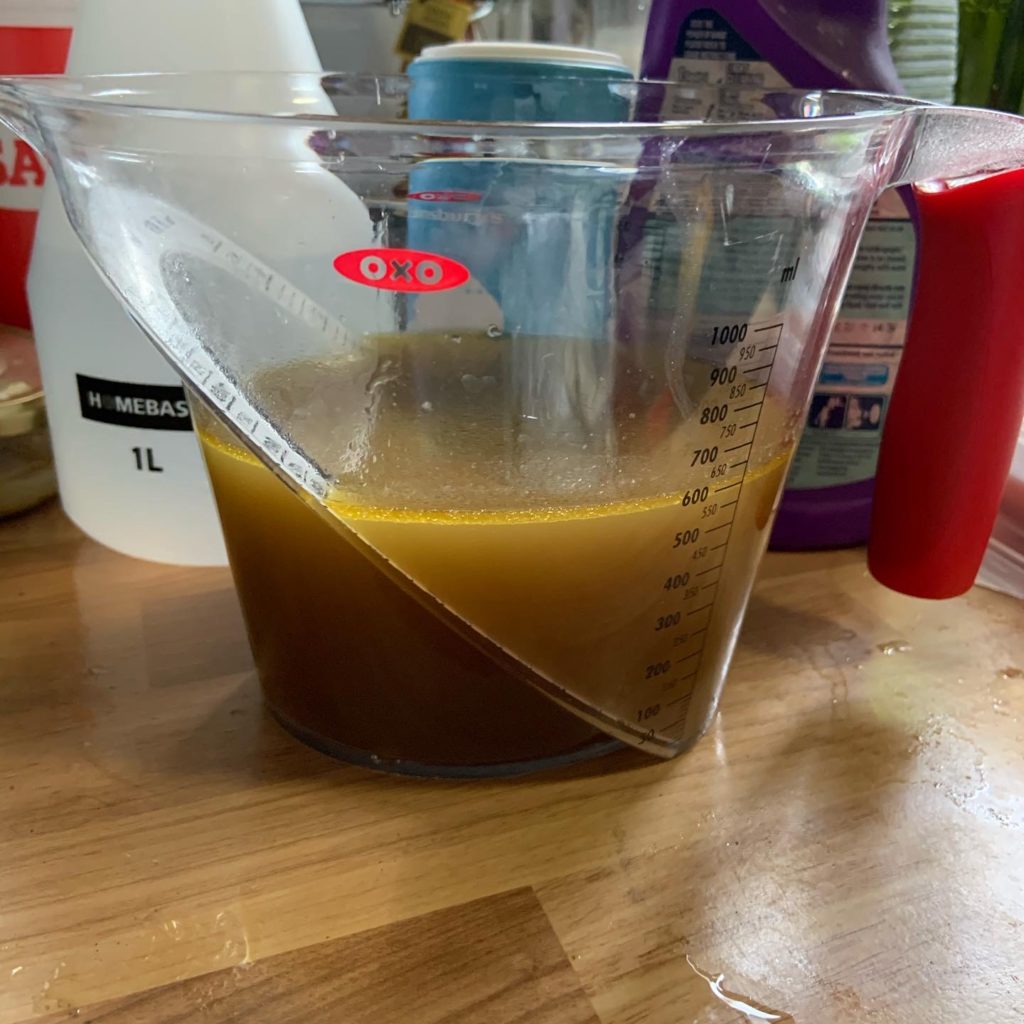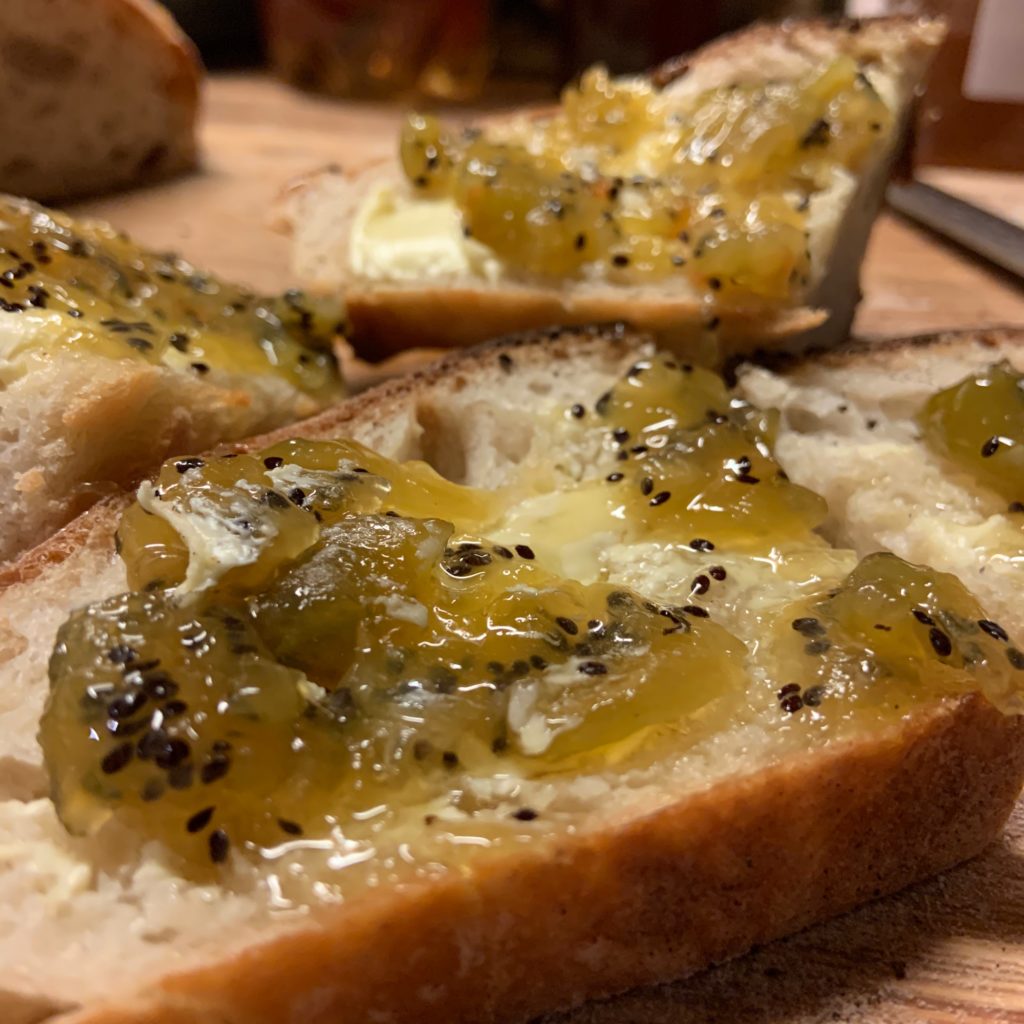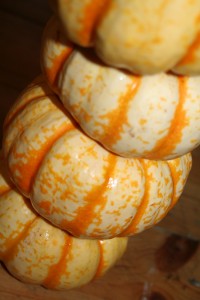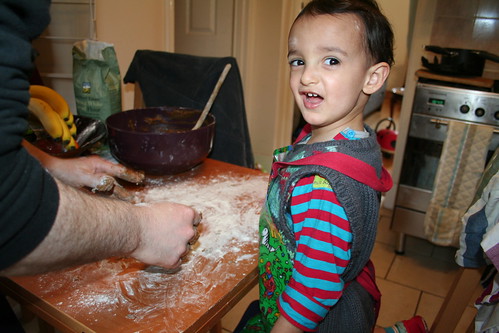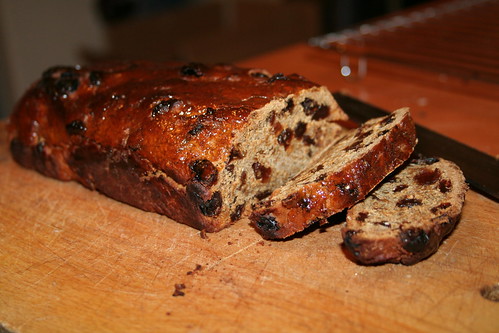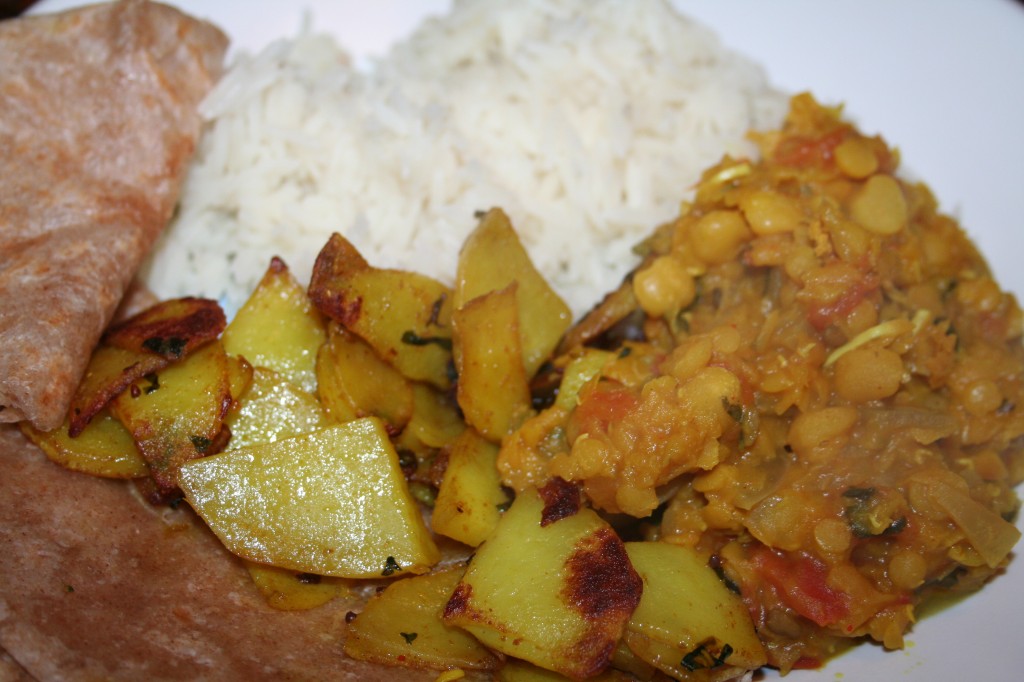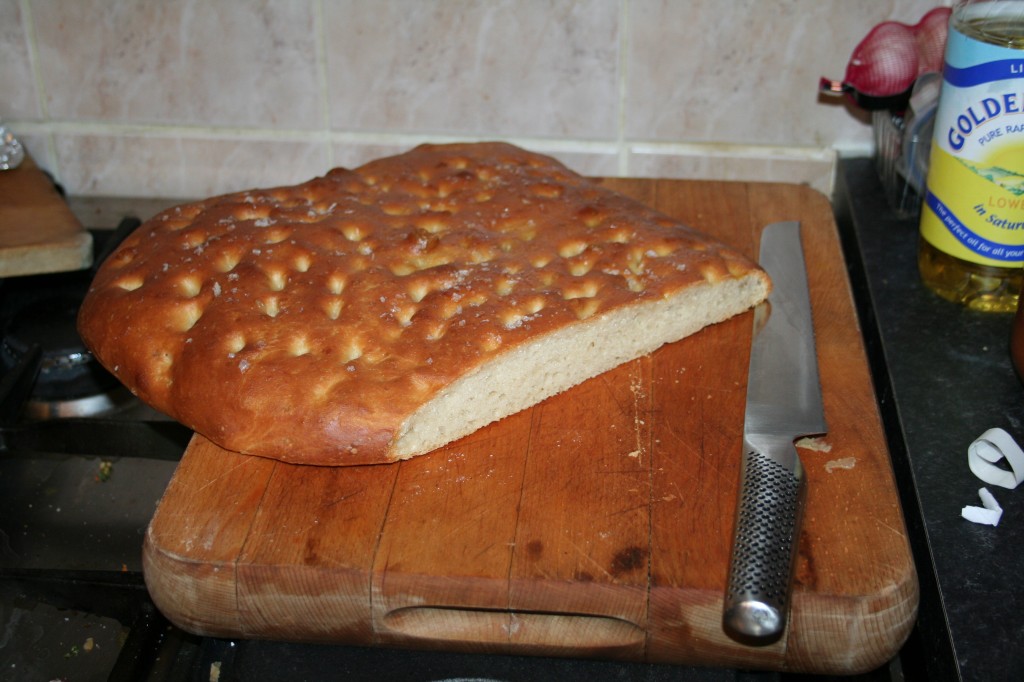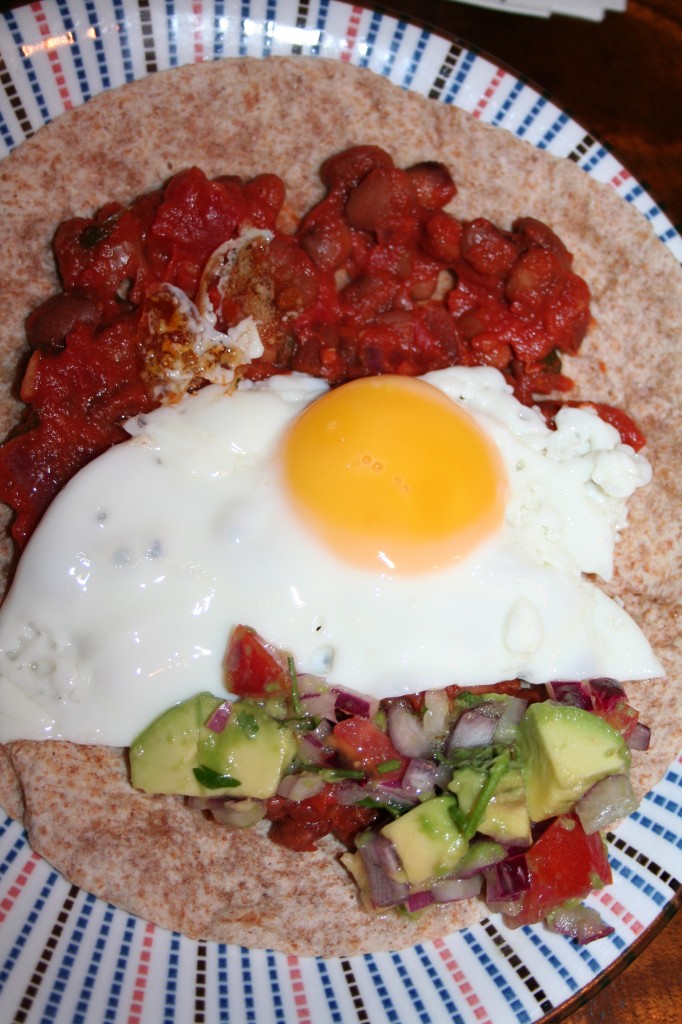- Feeling: Adrift
- Listening to: Now that’s what I call music
- Watching: Friday Night Dinner
Easter Monday felt like the laziest day since lockdown for me, although D took on the challenge of tidying F’s room (with, sad to say, no help from F who just gets incredibly grumpy if it is suggested she should do the smallest bit of tidying her room).
We all got up late and didn’t do a huge amount in the morning. F curled up on the sofa listening to Cabin Pressure then played computer games, and I think B worked on the computer game he is writing some more. I read and mixed up some bread. We’ve got an excess of wholemeal bread flour so I thought I should try to use some up and decided to get a bit experimental. I had a wholemeal bread dough recipe from Richard Bertinet and a couple of recipes for bread made with honey, and so I decided to try baking a wholemeal loaf with some chestnut honey which I got from a stall on Warwick Market a little while back. The honey is quite dark and has a strong flavour (when I first tasted I said to the stall owner that it “tasted of old wardrobes – in a nice way”). I decided to go for a no-knead approach to the bread and just mixed, then stretched & folded a few times over the next hour, before leaving it to rise for another hour, then another stretch & fold before putting it in a proving basket for another hour before I baked it. Sadly that meant it wasn’t ready for lunch, which the kids had outside despite it being much cooler today.
The bread looks and tastes great. The honey flavour comes through enough to taste but not too strong. The texture a bit too soft for my liking – but I suspect the kids and D prefer the softer crust.
In the afternoon F watched High School Musical 2, while I did some work (I’m a little behind where I need to be with some projects) and D worked on a blanket she’s been knitting. It was only when I got a reminder pop up on my computer that we remembered the kids had Maths/English sessions online today – and that we’d already missed an online art class for them earlier in the afternoon (in addition to missing Bs online piano lesson on Thursday).
It’s slightly odd that classes are carrying on despite the bank holiday – I guess we are all finding our perception of days and time is being affected by the lockdown and since no one can go away on holiday why not carry on with lessons and appointments.
I roasted a chicken with potatoes for me and the kids while D had eggs for tea, and we finished off Fs birthday cake.
We had an issue with F at bedtime and she got very upset, but I can’t bring myself to relive it right now – just 9yo drama but upsetting for us all and it makes us worry about her.
On a more upbeat note, D finished the blanket this evening after weeks (months?) of work!
Stay safe, stay strong.


